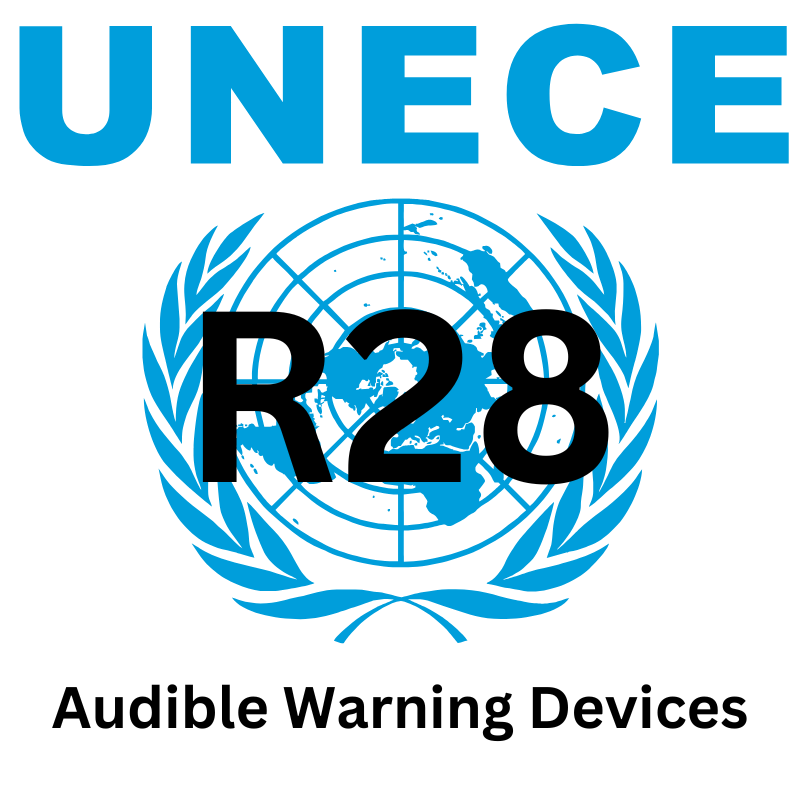Guide To: UNECE R28 - Audible warning devices
23 July 2023

UN ECE Regulation No. 28 sets forth the uniform provisions concerning the approval of audible warning devices and motor vehicles with regard to their audible signals. These devices are critical for vehicle safety, ensuring that drivers can alert other road users to their presence in situations that demand attention, such as when overtaking or during emergencies.
Scope of the Regulation
UN ECE R28 applies to:
- Audible warning devices that are intended to be fitted to motor vehicles (excluding motorcycles). These devices include electric or pneumatic horns designed to produce sound that is loud enough to alert others without causing undue annoyance or danger.
- Audible signals of motor vehicles, which include the overall performance and integration of these warning devices on vehicles to ensure they function effectively.
Key Features of UN ECE R28
Design and Construction:
- The regulation applies to a wide variety of warning devices, including electric horns, electro-pneumatic devices, and others. These devices must emit a continuous and uniform sound without any significant variation during operation.
- Audible warning devices must meet specific sound pressure levels, which range from a minimum of 105 dB(A) to a maximum of 118 dB(A), measured at a distance of 2 meters from the sound outlet.
Testing and Performance:
- The devices must undergo rigorous tests to ensure that they can operate under normal vehicle conditions, including after 50,000 activations. This endurance test ensures the durability of the device throughout its lifespan.
- The regulation specifies how sound levels should be measured, ensuring consistency and reliability in testing environments such as anechoic chambers or open sites.
Vehicle Integration:
- Vehicles must also meet specific requirements regarding the installation and performance of these devices. For example, the location, mounting, and type of warning devices must not affect their sound level and effectiveness. The regulation also accounts for how the shape and materials of a vehicle’s bodywork might affect the sound emitted by the device.
Marking and Approval:
- Approved audible warning devices must bear the manufacturer's trade name or mark and an international approval mark that includes the letter “E” followed by the identifying number of the country granting the approval. This ensures traceability and adherence to regulatory standards.
- Each approved device receives a unique approval number, which must be affixed in a conspicuous place on the device.
Conclusion
Audible warning devices are crucial for vehicle safety, helping drivers to communicate their presence effectively in traffic or emergency situations. Compliance with UN ECE R28 ensures that these devices meet stringent international standards for performance, durability, and sound levels. Manufacturers and vehicle operators must ensure that their audible warning devices conform to these specifications to maintain road safety and regulatory compliance.